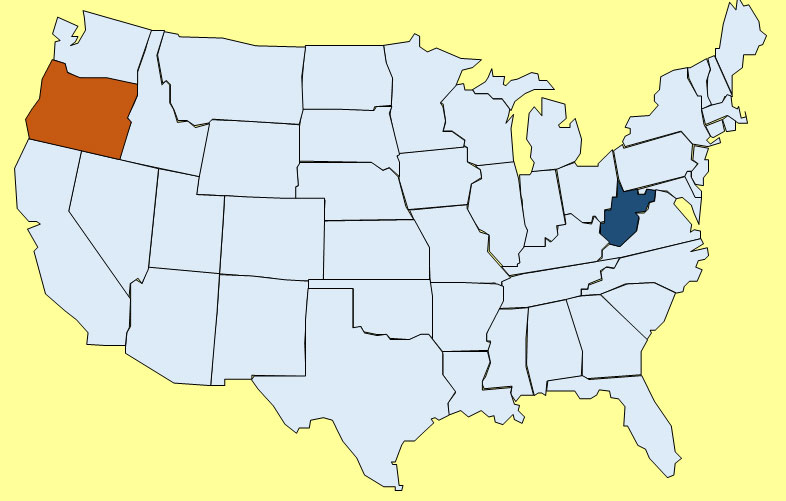Fact Check – Lifting Oil Export Ban to Create Lower Gasoline Prices – Likely True for Some Time
There is so much material to discuss recently as I try to finish my review of the EPA Clean Power Plan (Paper #1, Paper #2, Paper #3). This morning I saw the solar discussion and now I see this article with one of my former colleague and friend as co-author. The heading was very catchy – “Why the U.S. Needs to Lift the Ban on Oil Exports Surprisingly, this will mean lower gas prices at the pump, and a greater supply of crude in an unstable world.”
They did a great job pointing out the history and facts of the export ban. They also presented the major concern of the oil producers. “…so called tight oil, or “light oil” recovered by hydraulic fracturing and horizontal drilling—is a poor match for refineries in the Midwest and along the Gulf Coast. Refineries have spent more than $100 billion in recent decades reconfiguring their equipment to process heavy, lower-quality imported oil from Canada, Mexico and Venezuela, as well as the new supplies coming from the Gulf of Mexico. They have been able so far to absorb the new light crude but are reaching their limit even as tight production keeps growing. If these reconfigured refineries run more light instead of heavy crude oil, they lose output capacity—and revenue—due to a mismatch of the light oil with their equipment. To make up for the lost revenue, refineries won’t buy the light oil except at a discount, which could run as high as 20%. At that price, oil producers can’t cover the cost of some of the new wells, and cash flows would decline. This means less drilling and lower crude production.”
This same issue was pointed out in my US refining outlook for 2014 done back in February. I will respectfully disagree with the hidden conclusion that eliminating oil exports in the US will be the BEST decision. At the same time, I will agree with their conclusions that there is a possibility that gasoline prices can be reduced by as much as 12 cents a gallon by removing the restriction. The reason for this is not that 12 cents cannot happen but it may not answer the real question that should be posed which is this removal of the ban the best decision over time. The logic that world markets could get immediate relief and an optimized US refining industry would produce a more optimal solution for the world system is reasonable. However this conclusion does not state that it is the best for the US. It does show benefits in a discrete time period. There is a possibility those 12 cents savings disappears over time as demand grows in other markets.
Economics would lead you to rationalize making a finished product is worth more than the raw commodity that made up that product. The difference becomes the margin in applying work. This margin and the value for that creation can be kept in the US if the export ban was continued. There is a solution to the significant light oil discount beyond reconfiguring existing refineries, which made a business decision based on full knowledge of the restriction and the potential landscape shifts. Capital investments can be made in existing facilities, brownfield/refurbishment (I do know a 80,000 b/d condensate refinery that can be brought back to life for $800 million in 18 month time projected IRR 30+% – email me if you are interested), or build a new refinery. They did note the option of new refineries would take time. However, it is this time element which is needed to make business decisions that last decades. Continued certainty of discounts will add to decisions to build/refurbished/retrofit refiners in the US. This will create multiple jobs plus convert the US to potentially being a net exporter. Currently, the US is still net importing around 6 million barrels per day. The Latin America market is growing and it would be the ideal export area for finished products such as gasoline. Given the statement from the article “U.S. gasoline prices are set by global gasoline prices”, as a country you wouldn’t want to be the importer particularly in the scenario when other markets start valuing gasoline much higher. Being a net exporter, you are guaranteeing the local consumer a discount to world market prices per transportation netback calculation.
I will conclude with their statement and append it “Ending the ban would enable the U.S. to benefit significantly more from its oil-production renaissance” in the near-term, however if we could get our act together perhaps there is a chance to revitalize our trade imbalances and become a net exporter and serve the growing markets of L. America by keeping the ban.
By the way, I am a libertarian at heart and many know me to be. However I am a practical libertarian in that I understand a system with limited government intervention is the best, but the world is full of government intervention (e.g. huge oil subsidy to local consumers in the Middle East) therefore it would be foolish to blindly stay 100% with an ideology that the premise of the ideology cannot be created.
Your ever searching for the Truth Energy Consultant,
David
David K. Bellman
All Energy Consulting LLC- “Independent analysis and opinions without a bias.”
614-356-0484
[email protected]
@AECDKB
blog: https://allenergyconsulting.com/blog/category/market-insights/
Fact Check – Solar Land Space Needs
I am still working on reviewing the EPA Clean Power Plan analysis (Paper #1, Paper #2, Paper #3). I am currently running multiple dispatch simulations to produce an impact analysis using AuroraXMP. However, I got distracted from a twitter blog that showed the solar land requirements for the world to be extremely small. See blog screenshot below.
I traced the source to this paper from a student who wrote it for their Diploma Thesis. On page 11 & 12 of their report are the claim and the graphic being spread on the internet. The first issue which should jump out is the statement “If a solar electricity yield of 250 GWhel/km² is taken as base ….” Doing a little research one can conclude at best that yield is off by 3X per the latest by National Renewable Energy Laboratory (NREL). In addition, the world electric consumption seems to be a little low in the assumption used 16,076 TWh/y vs. 20,280 TWh/yr.
If we recompute the numbers using a low estimate of land use per NREL of 3 acre/GWH-yr, the state of Oregon becomes the world size requirement versus the analysis which was closer to the size of West Virginia. West Virginia is more represented of the US requirement. This is not including the need to get battery storage and transmission. Battery storage size would be much smaller – less than Rhode Island. However land requirement is only one piece of the puzzle. Data source for state area.
The initial capital cost of such endeavor would be at least twice as large as using natural gas generation. Utility scale solar cost is at best around $2000/kW – then a utility scale battery would add another $500/kW versus a brand new gas plant which is around $1000/kW. The gas plant does have a significant variable cost, but as many of you know who have to budget your money, the best decision for the long-run sometimes cost too much given your current capital constraints. The trend for de-regulation for the generation business puts a greater limit on the ability to make these longer term decisions.
Lesson learned always check your facts when it comes to energy related discussions. It is too easy to manipulate the facts, because there is so much data and few go deeper to find the truth. The truth shall set you free.
Back to EPA analysis – stay tune….
Your Energy Consultant in Search of the Truth,
David
David K. Bellman
All Energy Consulting LLC- “Independent analysis and opinions without a bias.”
614-356-0484
[email protected]
@AECDKB
blog: https://allenergyconsulting.com/blog/category/market-insights/





